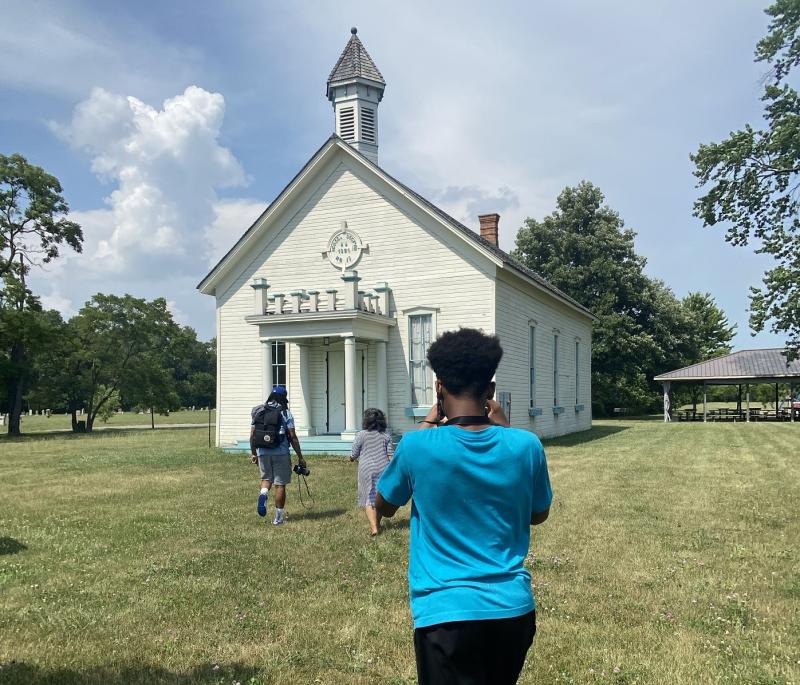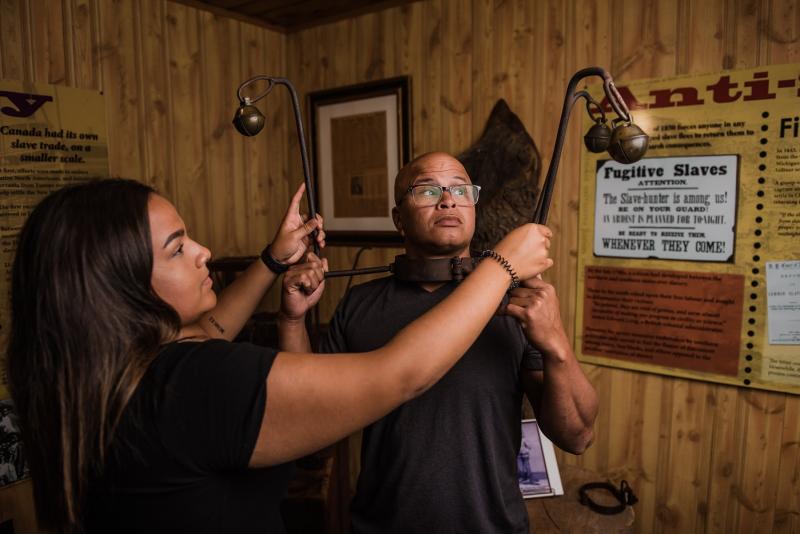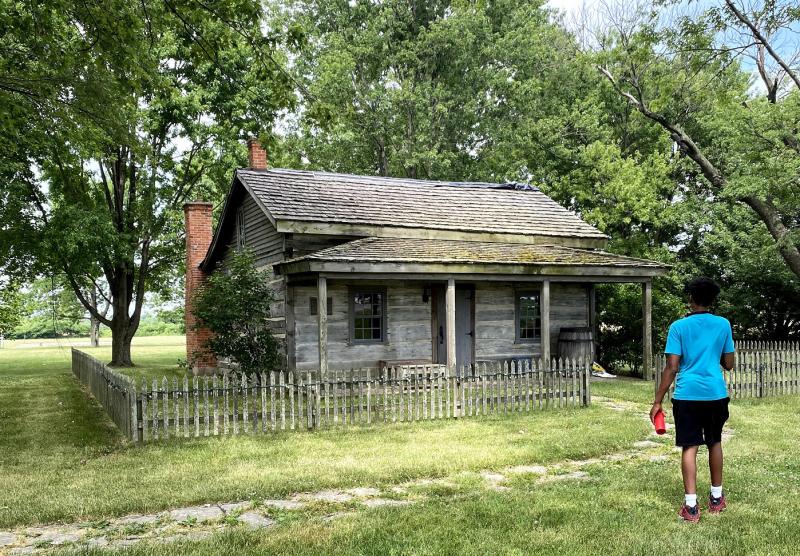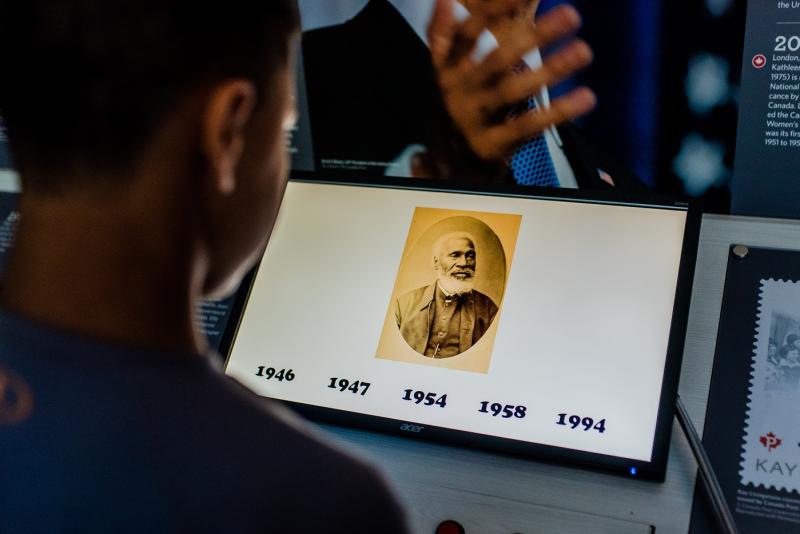The sound of my mom’s car muffler started my excitement. We were going on a road trip to learn about Black Canadian history. Recently, I’ve been very passionate about Black history and activism. I spoke out about my experience being a Black teenager in Canada at a Black Lives Matter rally. There, I also talked about the omissions within the education system and the ways I hope our government can enhance the Black History curriculum. I’ve read a number of books to try to educate myself on black history as well. The fact that my family and I were now going to Chatham-Kent, to learn firsthand about the Black Canadian history that we all missed out on in our education systems, felt like the chance of a lifetime.
Our trip focused on three areas. In each, we met locals who helped me better understand what I was seeing.

Chatham
At the Chatham-Kent Black Historical Society & Black Mecca Museum, Samantha Meredith talked to us about the former slaves and free Black citizens who built this area. Black people brought so much to the small community and built it from the ground up. There was a lot of Black excellence, from sports teams (like the Chatham Coloured All-Stars) to activism (Frederick Douglas came here!), to music and medicine. I can’t believe that this isn’t taught in schools.
This was also the first time I learned that August 1st is Emancipation Day! August 1, 1834 is the day that American slaves could get their freedom if they came to Canada undetected. On that day Lieutenant-Governor John Graves Simcoe made three new laws:
- If an American slave comes to Canada, they’re free
- When the child of a Canadian slave, born after this law, becomes 25 they are considered free
- Unfortunately, if you’re a Canadian slave when this law is enacted then you’ll remain a slave for life
It was interesting (and horrifying) to see how Canadian governors put American beliefs and needs before their own citizens.

Buxton
The next morning, we were off to visit the Buxton National Historic Site & Museum. Here, Shannon Prince, whose family has been here for more than six generations, helped to explain how slavery made its way to North America and Canada’s part in it. Over the 17th to 19th centuries, somewhere between 9.4 million and 12 million Africans were transported across the ocean. We learnt about some of the equipment used on slaves to keep them from escaping, both on their voyage out of Africa and from their owners’ homes or plantations. A name that stuck with me was Wilson Chinn, he was a repeat escapee and his punishment was to wear a yoke. A yoke is a metal welded helmet with rods that hold bells on the ends (photo below). He’d have to wear this 15-pound weight throughout the day and when he slept! The worst part was, even after all of this torture he was also forced to wear a metal rod from the yoke to his ankle shackles so he couldn’t bend his back. I was so surprised to learn that people could treat each other this way.

On a more uplifting note, the Buxton National Historic Site has a giant bell out front. When a slave escaped the United States and got to this area, they could ring the bell. It would let the whole community know that another slave had found freedom. This tradition still goes on today. Guests to the site are encouraged to ring the bell to remember those who came before. In the past it was all about ringing the bell as a way to signal their freedom. I believe now it is to educate everyone about the past. When you’re ringing the bell you’re saying “I’m willing to educate myself on this topic” or “I’m willing to educate others!”.

Dresden
The main reason we went to Dresden was to see the Josiah Henson Museum of African-Canadian History. When we got there, the curator Steven Cook, took us on a driving tour of the area to show us all the land that was once a part of the Black settlement here.
I felt that the area with the most Black excellence was Dresden. In the past Black people would come to Dresden and purchase the land because it was all swampy and didn’t fit the conditions needed to produce crops. Black people built this area from swamps to success! Unfortunately, most Black farmers weren’t able to hold on to their land. Europeans came and started purchasing the land. Since the owners couldn’t afford to keep this land or had kids that didn’t want to continue farming, they sold the land. Although they were probably paid lots of money, it wasn’t nearly as much as what they could’ve earned if they kept it throughout the years. It made me sad to think about all of the Black farmers we lost as a result.

There is so much more I could tell you about my trip to Chatham-Kent, but I hope that you will go and see it for yourself. Our trip was only three days long, but I learned so much about Black history on this trip and its role in Canada’s past and present.
Cameron Davis is the creator behind the CammyD YouTube page. At 15, he has already made a name for himself as an athlete, content creator, gamer, activist, published author and clothing designer. The Canadian teen is working on making long-lasting positive change by empowering youth to use their voices for action.

